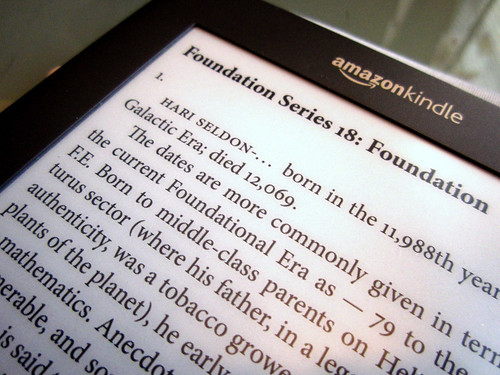How Perl helps me read
I like to read. Over time, I've become quite a rapid reader - I remember a project at school where you would get a dignoria (star) for writing a book review during the summer holidays... and I had read 26 books.
During my short commute on the tube I like to read something. I used to bring paperback books and magazine on the tube. Before going on a weight-restricted holiday I had bought.a Sony Reader PRS-600 e-book reader.
This was quite neat, fairly small. Not a great screen or battery life and it would only charge on a computer's USB socket, not a generic USB one. There are a wide range of public domain e-books or you can create books with your own content and the useful Calibre e-book management software can scrape news sites.
A few months ago I bought a third-generation Kindle 3 and it was a great step up. The screen is so much nicer, it's so small and thin and the battery life lasts ages. Oh, and with a WiFi connection it's way too easy to buy the odd book. I take this everywhere I go, it contains tens of books in case I get bored, and it has a terribly reasonable price. I highly recommend it.
However, I wasn't so sure about the Kindle font. It looked a bit weird and didn't have any ligatures, and my standard font for all print things is Adobe Minion Pro. So I wrote a little hack which digs into an EPUB book (it's really a ZIP archive full of HTML-like files), stripped most of the formatting away with HTML::FormatText, created a few LaTeX files and thus a PDF which I upload to my Kindle. Check out the beautiful typography here:
And that's how Perl helps me read.
PS Let's just call it a book from now on.

 Léon Brocard (aka acme) is an orange-loving Perl eurohacker with many varied contributions to the Perl community, including the GraphViz module on the CPAN. YAPC::Europe was all his fault. He is still looking for a Perl Monger group he can start which begins with the letter 'D'.
Léon Brocard (aka acme) is an orange-loving Perl eurohacker with many varied contributions to the Perl community, including the GraphViz module on the CPAN. YAPC::Europe was all his fault. He is still looking for a Perl Monger group he can start which begins with the letter 'D'.
Leave a comment